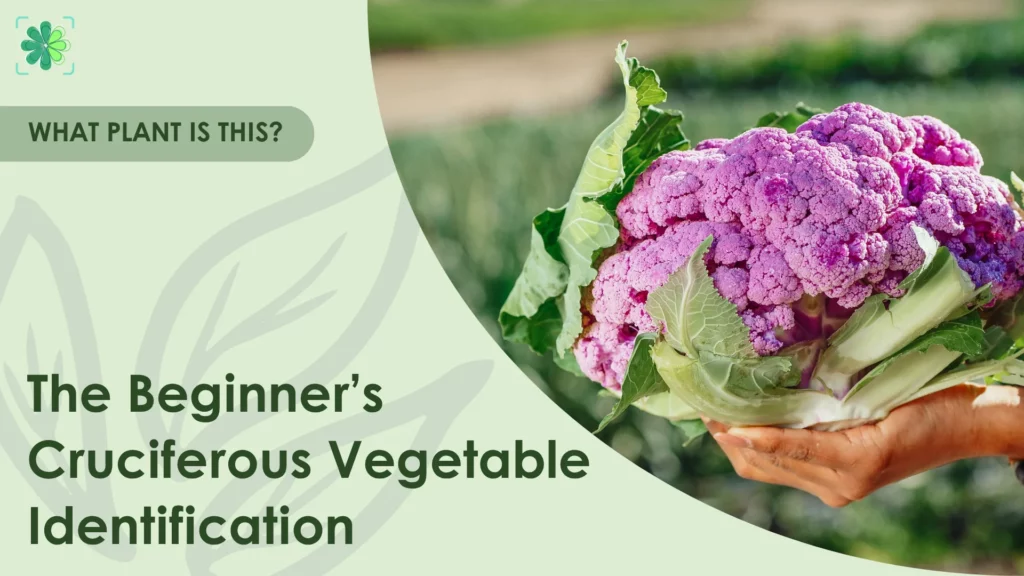
Cruciferous vegetables are some of the most recognizable and nutrient-packed greens you’ll find at the market. This guide serves as your shortcut to identifying cruciferous vegetables, helping you spot them quickly by using clues such as flower shape, leaf texture, and growth habit. From broccoli and bok choy to radishes and arugula, you’ll learn how to tell each one apart and why they matter in both the kitchen and the garden. Additionally, we’ll cover key health benefits and provide tips for identifying and growing them with ease.
What Are Cruciferous Vegetables?
Cruciferous vegetables are a group of cool-season crops that belong to the Brassicaceae family, also known as the mustard or cabbage family. The word “cruciferous” comes from the Latin cruciferae, meaning “cross-bearing,” referring to the plants’ four-petaled flowers arranged in a cross shape — a key feature in cruciferous vegetable identification.
Key characteristics of cruciferous vegetables:
- Most are cool-season crops, thriving in spring or fall.
- They typically have edible leaves, heads, stalks, or roots.
- Many give off a pungent aroma when chopped or cooked, thanks to natural compounds like glucosinolates.
- Their taste often leans toward slightly bitter or peppery, especially in raw form.
People care about cruciferous vegetables not only because they’re versatile and delicious, but also because they’re loaded with vitamins, fiber, and potent plant compounds linked to long-term health.
Botanical Features That Help You Identify Cruciferous Greens
Flower Structure
The most distinct trait of cruciferous vegetables lies in their flowers. Each one typically features four petals arranged in the shape of a cross, a visual clue so consistent that it gave rise to the name Cruciferae, meaning “cross-bearing.” These flowers are small but botanically significant, and you can often spot them in wild plants or bolting garden crops.
You’ll usually notice:
- Four-petaled flowers forming a cross shape
- Clusters of small blooms, often white, yellow, or light purple
- Consistent symmetry, making them easy to spot during the flowering season
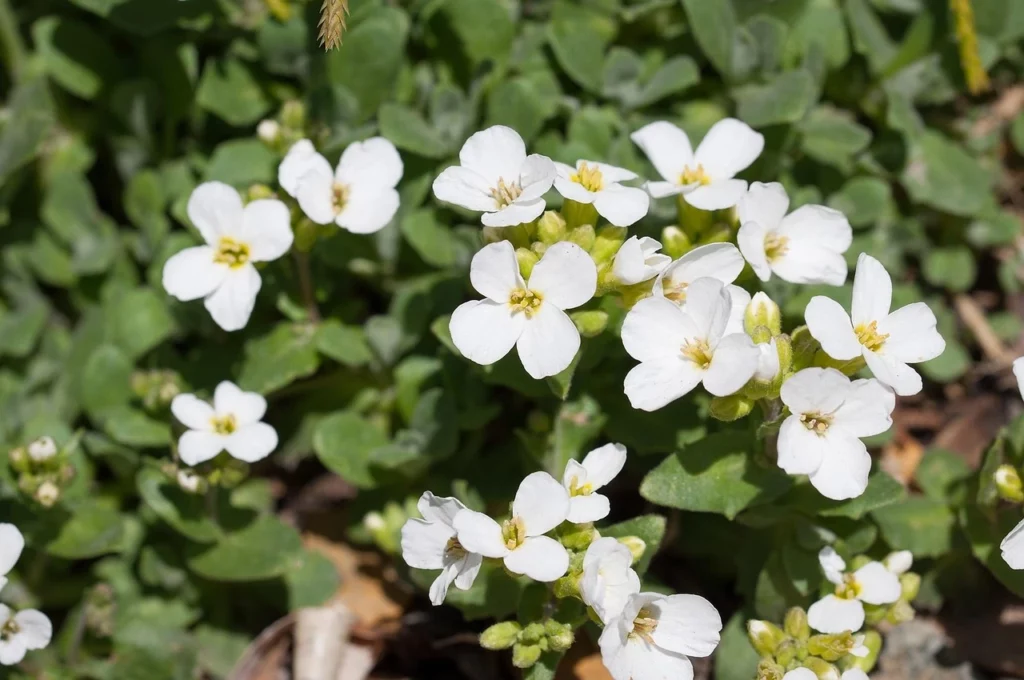
Leaf Characteristics
The leaves of cruciferous vegetables are diverse but share recognizable traits. This makes leaf shape and surface one of the fastest ways to apply cruciferous vegetable identification techniques.
Look for:
- Broad, textured leaves that may be lobed, frilled, or flat
- Waxy or matte surfaces, especially on kale and collards
- Pronounced veins, often branching from a central midrib
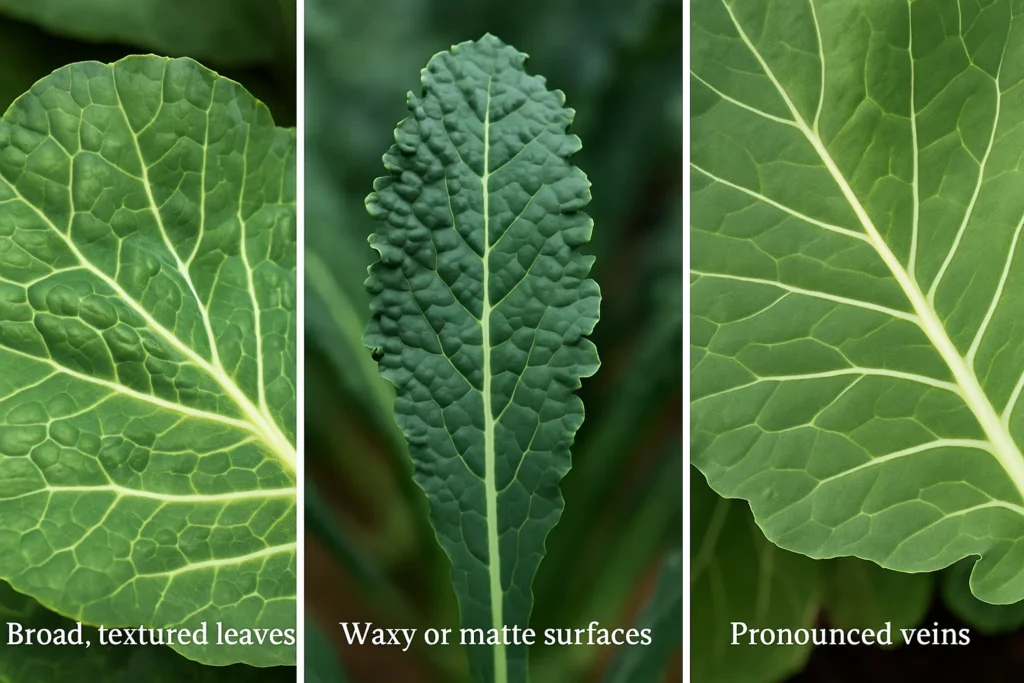
These features not only aid in visual identification but also impact how these vegetables cook and feel in texture-rich dishes like stir-fries or sautés.
Growth Patterns
Cruciferous vegetables grow in distinct structural forms, depending on the species. Some form tight heads, while others spread outward in leafy rosettes or grow underground as roots. Noticing these growth habits can tell you a lot about what you’re looking at.
Common patterns include:
- Tightly packed heads, like cabbage or Brussels sprouts
- Rosette-shaped clusters, like kale or mustard greens
- Upright stalks with branching tops, such as broccoli or bok choy
- Enlarged edible roots, like radish or turnip
Smell and Taste
Cruciferous vegetables have a strong sensory signature due to sulfur-rich compounds called glucosinolates, which activate when the plant is crushed, chewed, or cooked.
Here’s what to expect:
- A sharp, peppery smell when leaves are chopped or bruised
- A slightly bitter or spicy flavor, especially in raw greens like arugula
- A lingering aftertaste, typical in cooked cabbage or Brussels sprouts
This strong scent and flavor are often the easiest way to distinguish cruciferous vegetables from milder leafy greens, and they also happen to be part of what makes these veggies so nutritionally unique.
Common Types of Cruciferous Vegetables (with ID Tips)
1. Broccoli (Brassica oleracea, Italica group)
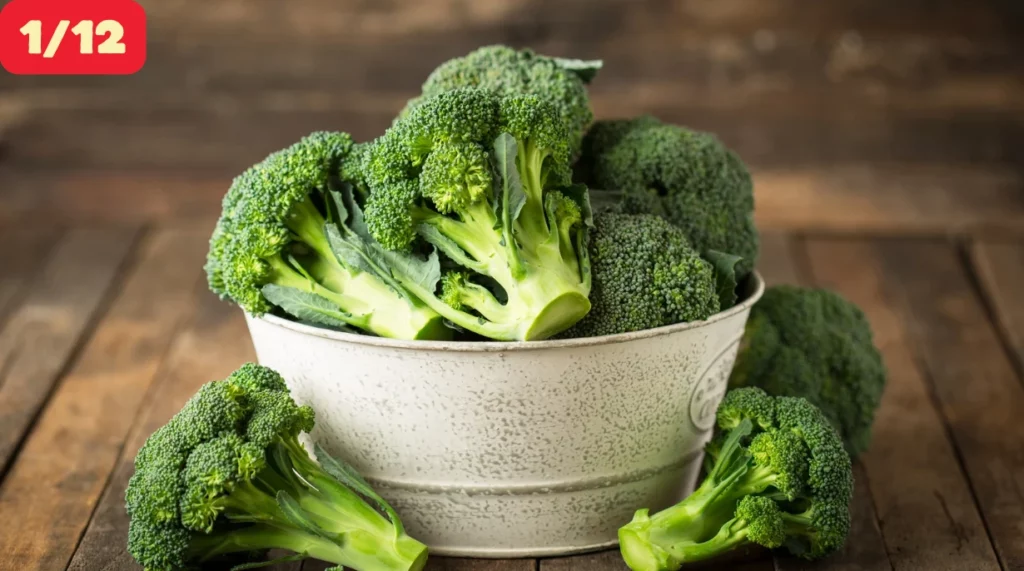
- Visual clues: Branching stems topped with dense, bead-like green florets
- Color & structure: Deep green buds, occasionally purple-tinged; thick stalk
- Flavor: Mildly bitter when raw, sweeter when cooked
- Use: Roasted, steamed, stir-fried, or blended into soups
2. Cauliflower (B. oleracea, Botrytis group)
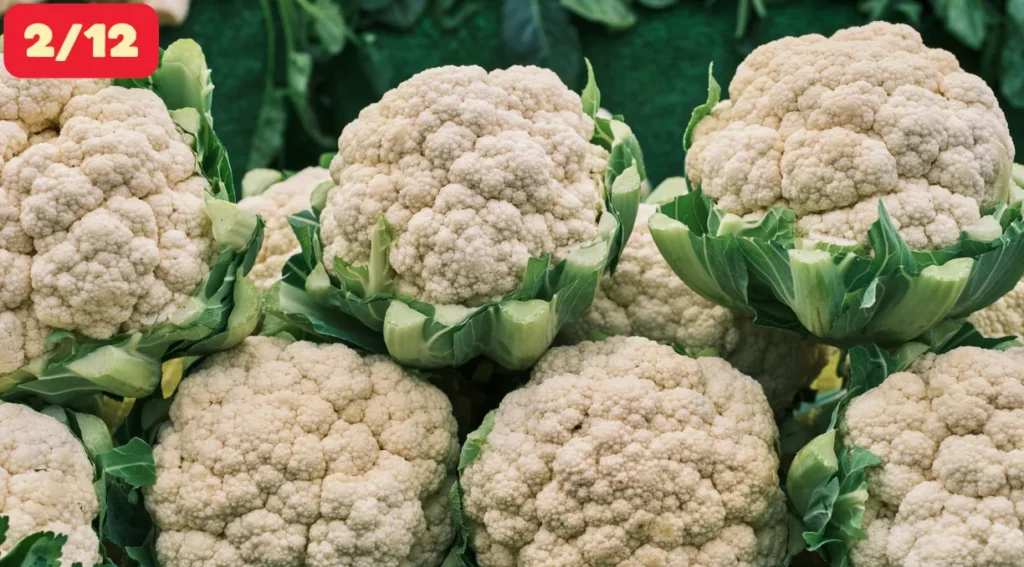
- Visual clues: Compact, dome-shaped head; no branching
- Color & structure: Typically white; also orange, green, or purple varieties
- Flavor: Mild, creamy, slightly nutty when cooked
- Use: Roasted whole, mashed, riced, or used in bakes
- Note: Its tight curd and leaf wrap make it easy to flag during cruciferous vegetables identification
3. Cabbage (B. oleracea, Capitata group)
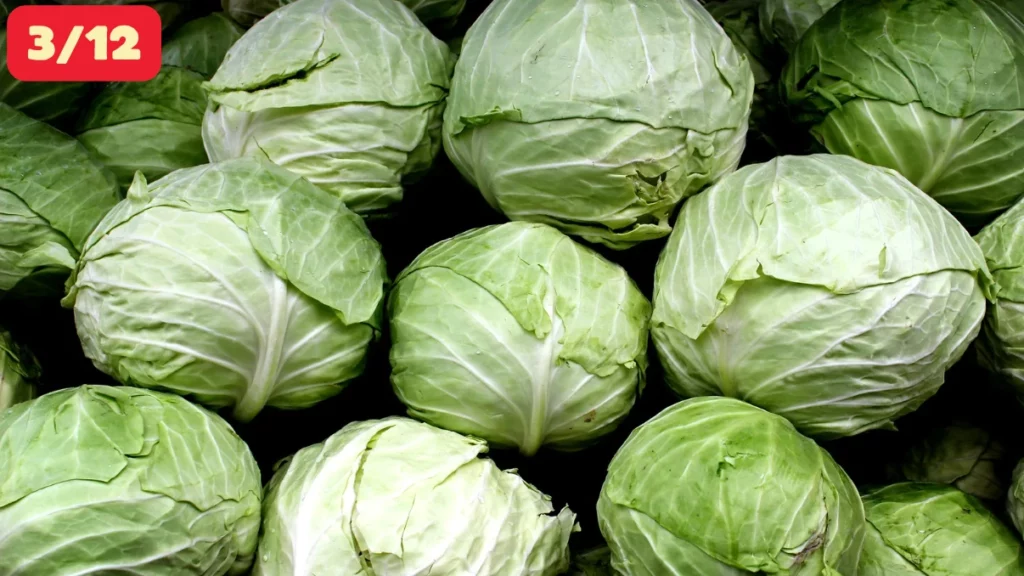
- Visual clues: Tightly layered, round or oval head
- Color & structure: Green, red, or purple; leaves may be smooth or crinkled
- Flavor: Crisp raw; mellow and sweet when fermented or cooked
- Use: Slaws, stews, cabbage rolls, sauerkraut
4. Brussels Sprouts (B. oleracea, Gemmifera group)
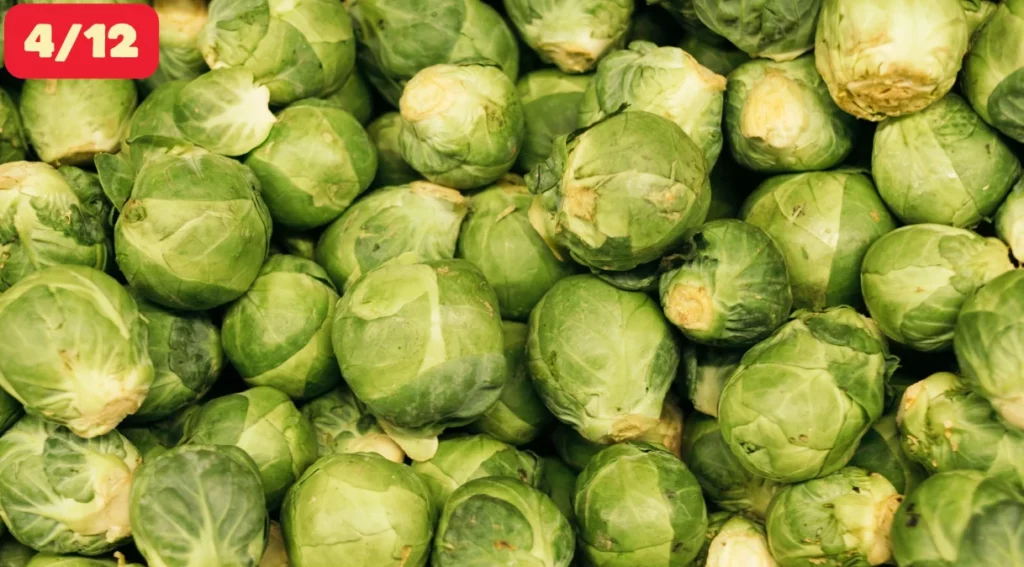
- Visual clues: Small, tight mini heads growing along a thick stalk
- Color & structure: Bright green, uniform in size
- Flavor: Bitter raw; nutty and caramelized when roasted
- Use: Halved and roasted, sautéed, or shaved in salads
- Note: Vertical stalk pattern is a clear indicator in cruciferous vegetable identification
5. Kale (B. oleracea, Acephala group)
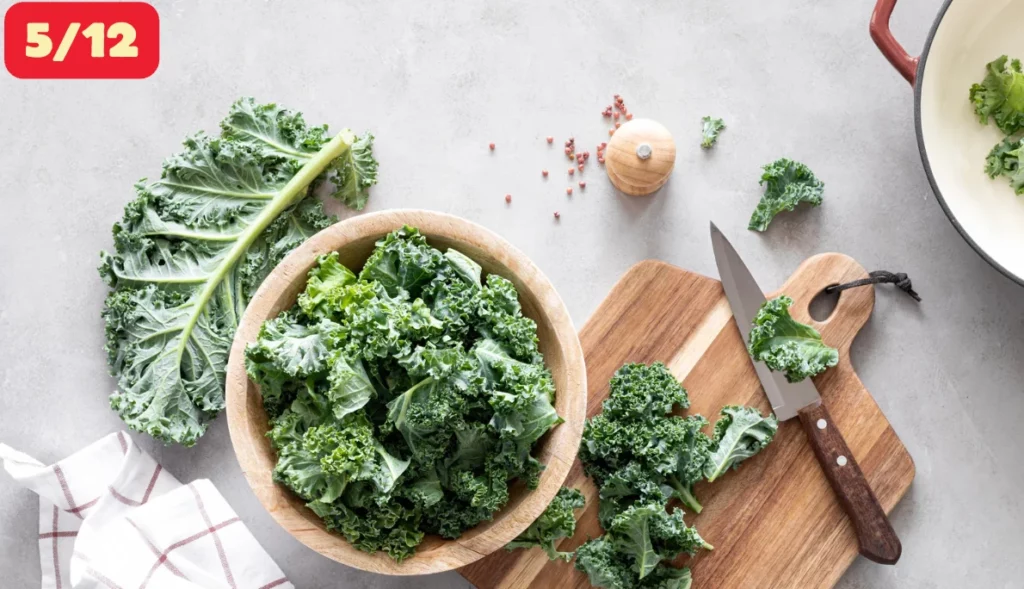
- Visual clues: Curly or flat leaves with prominent central veins
- Color & structure: Bluish-green to purple; thick, ruffled leaves
- Flavor: Bitter raw; softens when sautéed or massaged
- Use: Smoothies, soups, kale chips, grain bowls
- Note: Frilly leaf edges are a quick signal for cruciferous vegetable identification
6. Collard Greens

- Visual clues: Broad, flat leaves with thick stems and smooth edges
- Color & structure: Matte green, large leaves in upright rosette form
- Flavor: Mild, earthy; holds up well to slow cooking
- Use: Braised, used as wraps, or in hearty soups
7. Bok Choy / Pak Choi (Brassica rapa, Chinensis group)
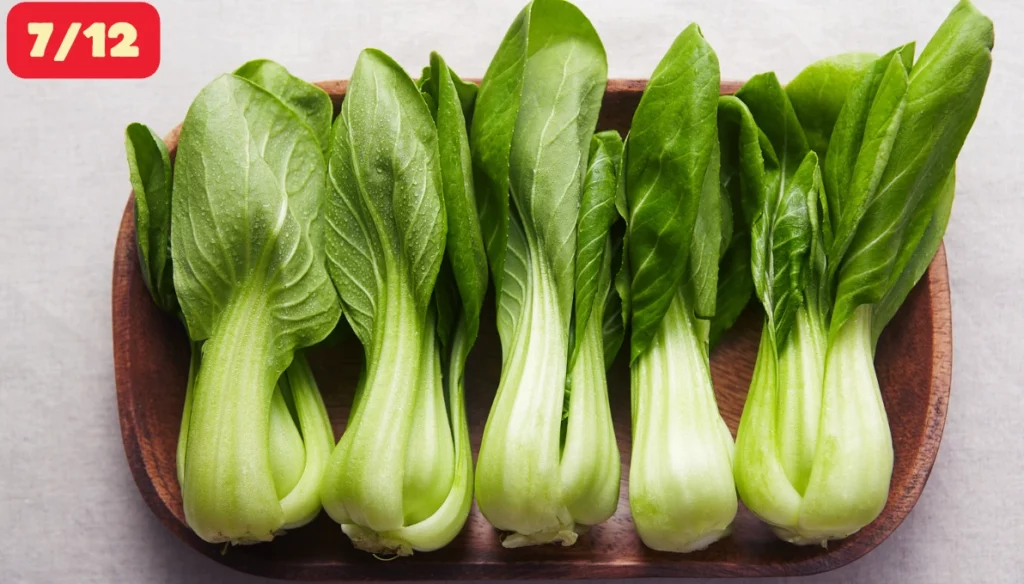
- Visual clues: Spoon-shaped green leaf blades with thick white stalks
- Color & structure: Dark leafy tops; pale, juicy stems
- Flavor: Mildly mustardy, sweet-crisp texture
- Use: Stir-fried, steamed, or in noodle soups
- Note: Two-tone contrast is a standout clue in cruciferous vegetable identification
8. Arugula (Eruca vesicaria)
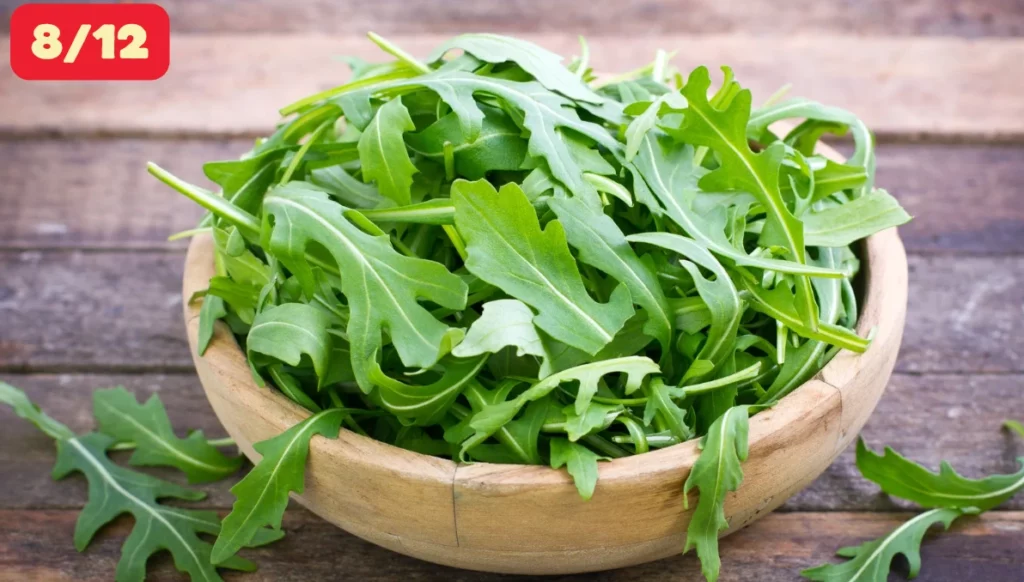
- Visual clues: Deeply lobed, slender leaves with soft texture
- Color & structure: Bright to deep green; thin, delicate stems
- Flavor: Strongly peppery and sharp
- Use: Raw in salads, pesto, or as a garnish
9. Radish (Raphanus sativus)
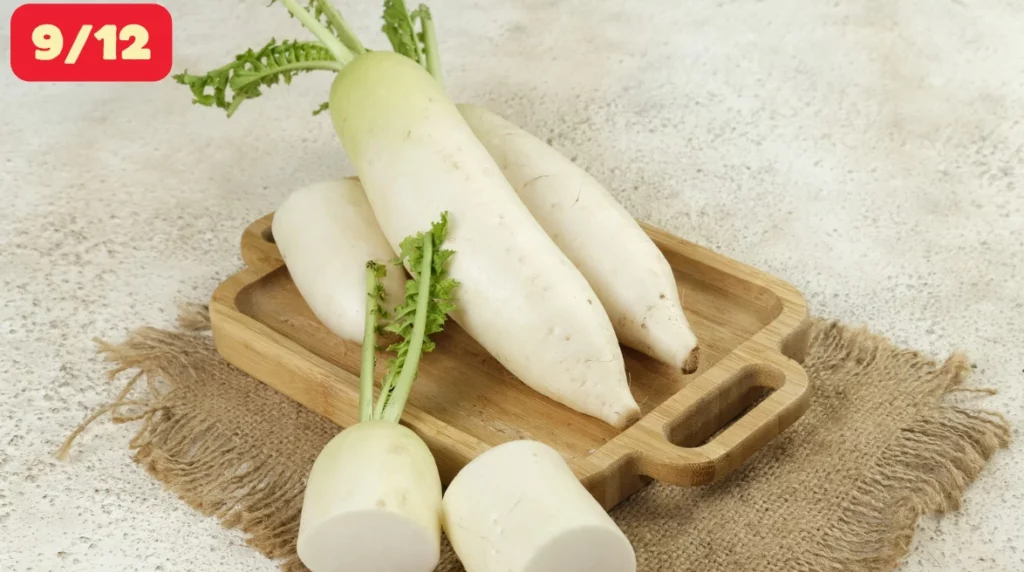
- Visual clues: Round or elongated taproots with attached leafy greens
- Color & structure: Red, pink, white, or purple skin; crisp white interior
- Flavor: Juicy, spicy bite when raw; mellows with roasting
- Use: Fresh in salads, pickled, or roasted
10. Turnip (Brassica rapa, Rapifera group)
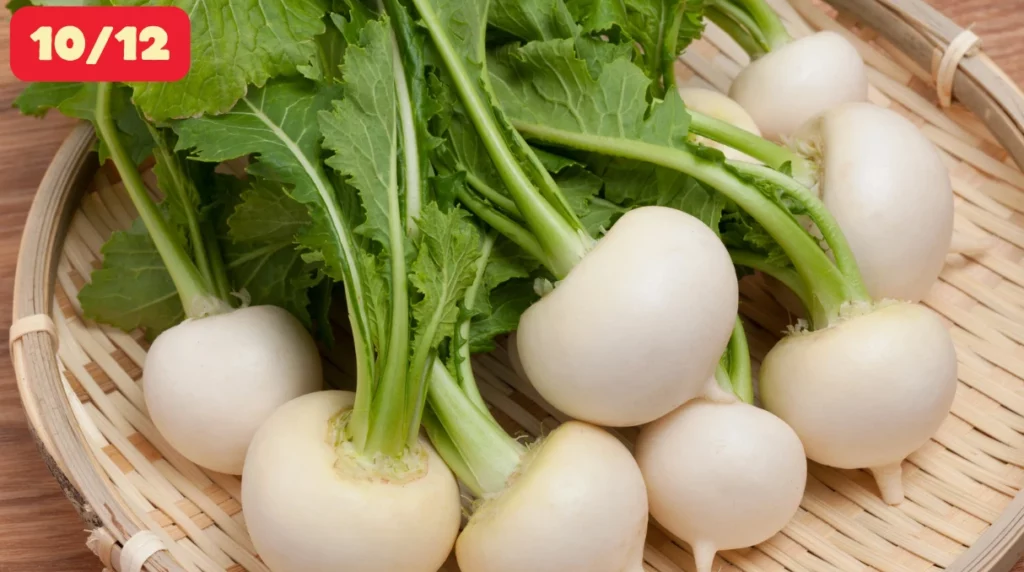
- Visual clues: Round, white roots with purple shoulders; leafy tops
- Color & structure: Smooth skin; broad, edible greens
- Flavor: Mild, sweet when young; earthy when mature
- Use: Mashed, roasted, or cooked with greens
11. Mustard Greens (Brassica juncea)
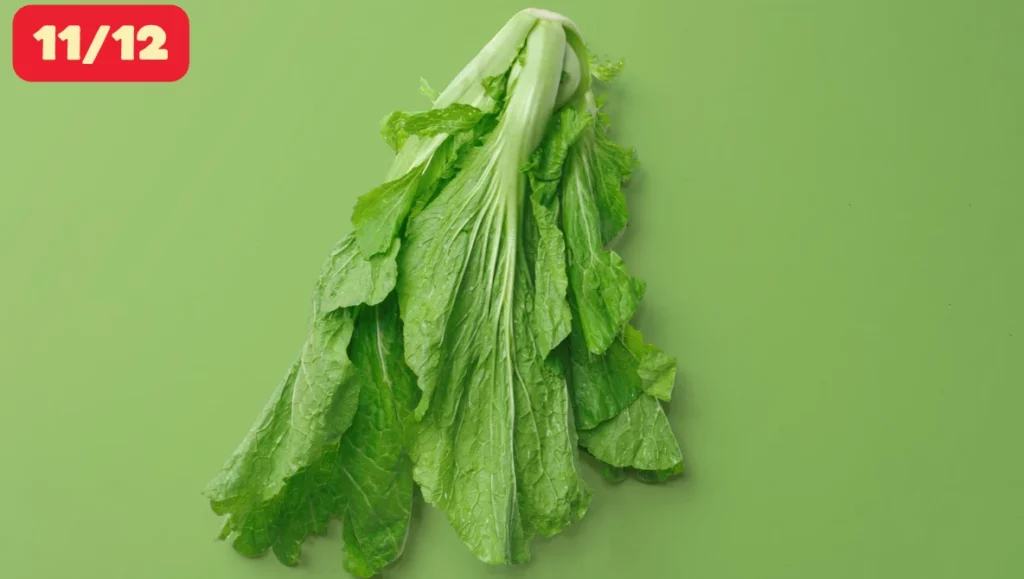
- Visual clues: Frilled or smooth-edged leaves with loose, open growth
- Color & structure: Green or reddish leaves; soft and pliable
- Flavor: Spicy and pungent, especially raw
- Use: Pickled, stir-fried, or wilted into soups
- Note: Signature heat and leaf shape support easy cruciferous vegetable identification
12. Watercress (Nasturtium officinale)
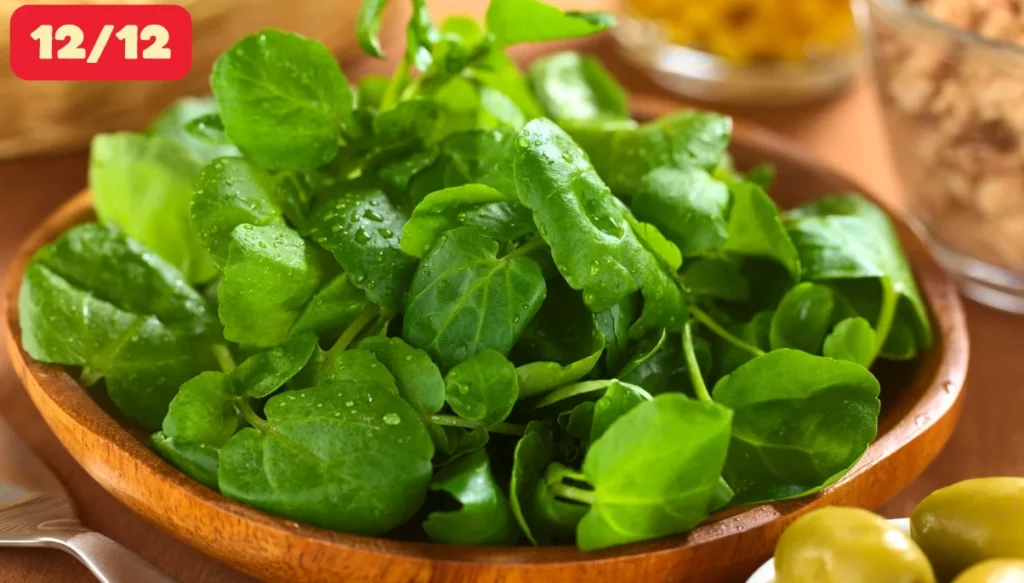
- Visual clues: Small, round leaves on thin, trailing stems
- Color & structure: Bright green, delicate growth
- Flavor: Peppery, juicy, slightly sharp
- Use: Eaten raw in salads or blended into a sauce
Nutritional Highlights and Health Benefits
1. Packed with Essential Nutrients
Most vegetables in the Brassicaceae family deliver a strong nutritional profile with very few calories. Whether it’s kale, cabbage, or cauliflower, you’re getting a range of essentials:
- Vitamin C supports immune health and collagen production.
- Vitamin K contributes to bone strength and proper blood clotting.
- Folate (Vitamin B9) plays a key role in cell repair and DNA synthesis.
- Fiber improves digestion and helps regulate blood sugar.
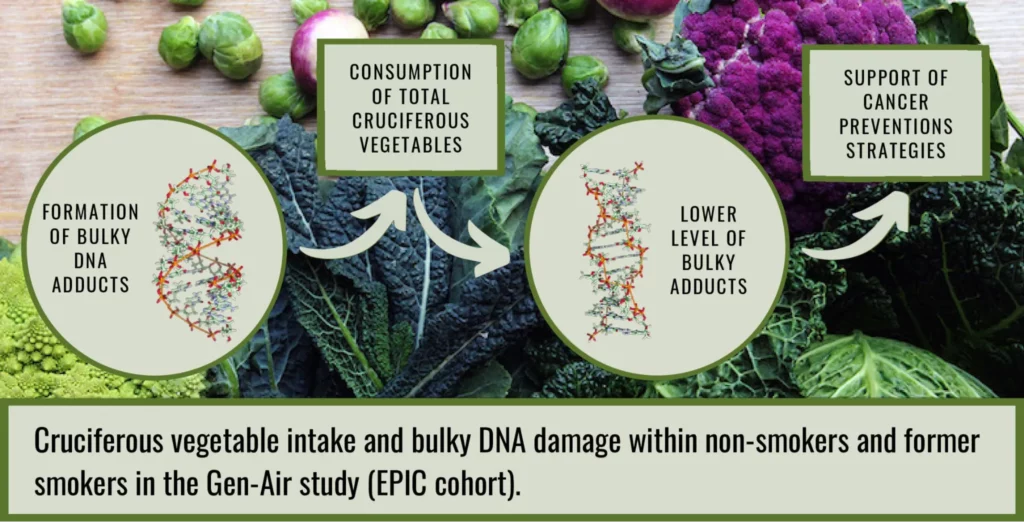
On average, cruciferous vegetables are also 85–90% water, which helps with hydration and satiety. These traits make them standouts in any health-conscious diet, and a good reason to learn smart cruciferous vegetables identification techniques when shopping or gardening.
2. Glucosinolates: A Natural Defense System
One of the most extensively studied benefits of cruciferous vegetables is their high content of glucosinolates. These sulfur-based compounds break down into active substances like sulforaphane and indole-3-carbinol, both linked to cancer prevention.
What makes glucosinolates special:
- They help the body detoxify carcinogens before they cause damage.
- They support hormonal balance, especially in estrogen metabolism.
- They’re being researched for protective effects against cancers of the breast, prostate, and colon.
Gardening and Growing Tips for Cruciferous Vegetables Identification
1. Plant in cool weather (15–21°C): Hot temperatures cause bolting and bitterness.
2. Spot seedlings early: Kale = frilly, Cabbage = smooth and round, Arugula = lobed with peppery scent.
3. Rotate every 2–3 years: Prevents soil diseases like clubroot.
4. Use companion plants: Grow onions or marigolds to repel pests.
5. Read leaf signals: Yellow = low nitrogen; purple = phosphorus stress (useful for both care and cruciferous vegetables identification).
Conclusion
In the end, mastering cruciferous vegetable identification helps you make smarter choices at the store, in the garden, and on your plate. From leaf shape to taste, every clue tells a story. Use the Planteyes app for fast, reliable plant ID anytime you’re unsure.
FAQs
How can I quickly tell if a vegetable is cruciferous just by looking?
Look for four-petaled flowers, a bitter or peppery taste, and broad leaves with thick stems. Many also have a strong smell when chopped (like cabbage or broccoli). Learning cruciferous vegetables identification makes spotting these clues easier over time.
Are all leafy greens part of the cruciferous family?
No. While many leafy greens like kale, mustard greens, and arugula are cruciferous, others like spinach, lettuce, and Swiss chard belong to entirely different plant families.
What’s the difference between cruciferous vegetables and other green veggies?
Cruciferous vegetables belong to the Brassicaceae family and often have glucosinolates, which give them their signature smell and health benefits. Other greens may lack these compounds and have milder flavors and textures.
Can I eat cruciferous vegetables raw, or do they need to be cooked?
Yes, you can eat most of them raw (like arugula, cabbage, or broccoli). However, cooking reduces bitterness and softens tough textures, and it also lowers goitrogen levels for those with thyroid concerns.


